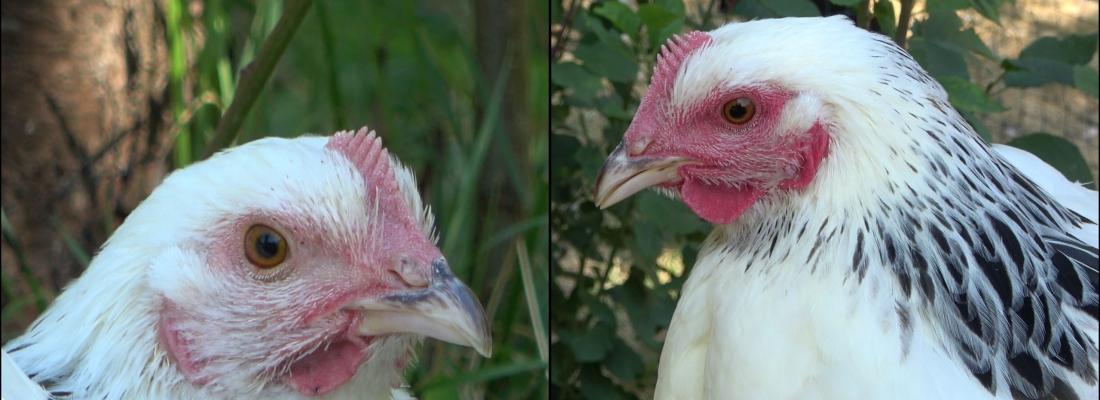How can we know what chickens are feeling? An INRAE research team were able to uncover various degrees of redness on chickens’ faces depending on their emotional state, while, at the same time, demonstrating that the skin of chickens that were used to humans stayed lighter in colour, thereby indicating a calmer state when humans were nearby. These results, which provide keys for assessing animal welfare, were published on 21 April in the Applied Animal Behaviour Science journal.
Studying emotion in animals is a complex research field, little explored up to now in birds, although reddening of the skin had already been observed in previous work on the blue-and-yellow macaw. An INRAE research team focussed on domestic fowl, in particular the popular Sussex laying hen, to determine if a similar phenomenon existed in chickens.
A total of six three-to-four-month-old Sussex hens were observed and filmed in a 363 m2 grove located in the Loire Valley, France, over a period of three weeks and in a variety of situations ranging from distribution of very appetising feed to capture. Through some very detailed work on two other breeds of chicken, the team selected 18,000 photos for use in a computer program they developed to detect chicken profiles and automatically extract them. Imagery software then made it possible to measure the levels of redness of the hens’ facial skin in those photos.
The results showed that chickens do get red in the face in degrees that vary according to their emotional state. When presented with appetising feed such as mealworms, the hens did get a bit red but their entire face became scarlet red during negative experiences such as capture. In contrast when they were at rest, their skin appeared much lighter in colour.
Assessing animal welfare
On the basis of this new information, the researchers looked at the human-animal relationship. They set up a trial involving a group of 13 Sussex hens that they gradually accustomed to the presence of one experimenter over a five-week period. In contrast to 13 other hens who had not undergone such preparation, the group maintained a lighter skin colour indicating a calmer state when the experimenter was nearby. This may indicate a more positive perception of human presence as compared to chickens that are not used to humans and so, it could be a new tool for assessing animal welfare.
This research has opened up several new prospects, beginning with the description of all possible means of expression for chickens, particularly movement of the head feathers in addition to skin colour changes during positive situations such as play or in negative ones such as frustration, e.g. appetising feed that is visible but inaccessible, or chronic stress. The researchers would also like to understand how such reddening signals work within the species, especially in social interactions of dominance or subordination.
Reference
Soulet D., Jahoui A., Guabiraba R. et al. (2024). Exploration of skin redness and immunoglobulin A as markers of the affective states of hens. Applied Animal Behaviour Science, 106268
https://doi.org/10.1016/j.applanim.2024.106268
[This study was carried out as part of the RED exploratory project (2020-2022; Exploration of new biomarkers of emotions in hens) whose goal is to explore two new non-invasive markers of emotion in domestic fowl, i.e. facial expressions and secretory immunoglobulin A. This project is part of the SANBA metaprogramme.]
Source : https://www.inrae.fr/en/news/emotion-can-also-cause-chickens-get-red-face







